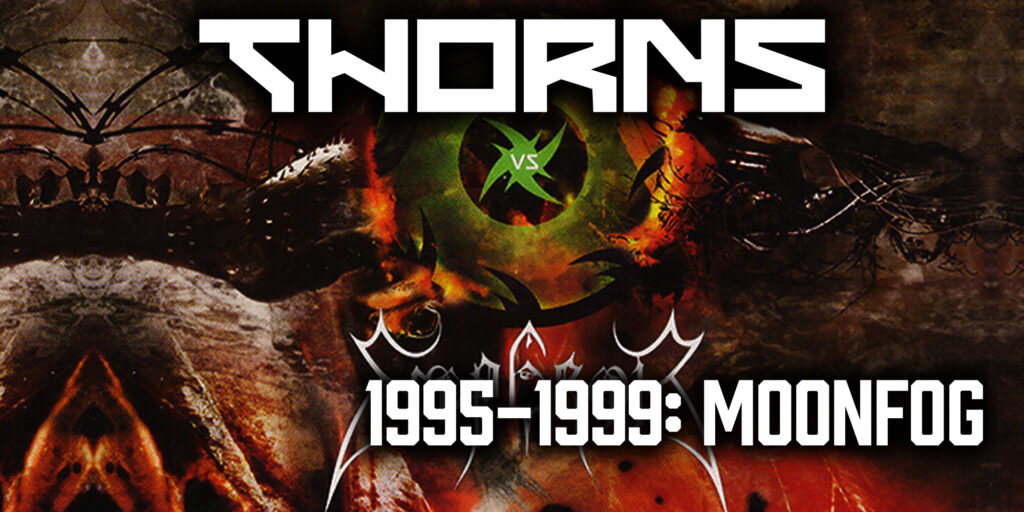August 10th, 1993, Oslo, Norway. Varg Vikernes stabs Euronymous to death at his doorstep, gets arrested, and is later sentenced to 21 years in prison for first-degree murder. This drove the final nail into the coffin for this much-discussed “Kvlt” era of Norwegian Black Metal, where a bunch of adolescent pricks and a lot of collective hysteria managed to briefly induce some shivers down the average housewife’s spine, but changed the face of Metal forever with a few musical innovations and a radical take on mood and atmosphere.
In this frankly embarrassing conclusion, Snorre was cast as the unlucky extra, the non-playable character – except he was not the one to die at the end of the “quest”. He was Vikernes’ driver on that fated night, and got sentenced to 8 years for complicity in murder.

For better or worse, he was not the only Black Metaller in his jail ; he got acquainted with Samoth, Emperor’s guitarist who got there on church burning charges – the bare minimum to get any sort of street cred in Black Metal at the time. Both kids vaguely talk about putting out some Thorns material through the Emperor pipeline. Nothing too ambitious at first, mere ideas on the back of an envelope… Until the new Godfather enters the scene.
Sigurd “Satyr” Wongraven is one of the “Peers of the Realm” of Norwegian Black Metal ; not only is he leading the legendary band Satyricon as guitarist and singer, but he is also the founder and owner of the Moonfog label keeping the scene alive, especially in this challenging post-Euronymous period.

As many others of his kin, Wongraven was greatly influenced by Thorns’ demos, so he went to Snorre’s parlour to tell him not to let his talent go to waste, and to get his ass back on track (probably not his exact words, but you get the idea). Good with words as the Devil’s associate, Satyr did convince Snorre to work on several new projects under the Thorns banner, one of which being the cult split between Thorns and Emperor.
One can imagine the stir caused by the association of two of the most respected and groundbreaking acts of Black Metal of their time, in 1999. Needless to say the ayatollah crowd went nuts, but this also brought Thorns to the ears of a slightly younger audience, thanks to Emperors’ apex of glory after Anthems to the Welkin at Dusk.
Even though both bands shared a common drummer, they had radically different approaches ; Emperor’s grandiloquent and hellish Black Metal soundscapes looked almost bombastic in front of Thorns’ ice-cold, razorblade, millimetric riffs. So… How did it go ?
Well, this split could actually be considered as the unofficial first Thorns album. The material coming from Emperor consists of an intro, an electro/Indus remix track and a rearranged version of Thus Spake The Nightspirit, as well as a cover of Cosmic Keys To My Creations And Times by Snorre’s merry orchestra, then composed of Satyr on vocals and a fellow inmate nicknamed “SA Titan” on keyboards.
Emperor’s contribution to the sound of this split is undeniable, but subtle; keyboard arrangements do sound like Symphonic Black Metal, both on the few tracks performed by Emperor and on Snorre’s tracks. But the overall vibe is geared towards Thorns’ martial and industrial steering. The Discipline of Earth is the only original Thorns song here, all the others being finalized, sublimated versions of the demos.
The Aerie Descent diptych is the best illustration of this collaboration’s artistic flavour. The most iconic of all Thorns songs is both performed by Emperor and Thorns, each one with their own take. Emperor’s version has their stamp on it ; yet it follows the original composition pretty closely up until the almost “heavy metal” bridge, epic as Emperor gets, and then goes spiralling back down this hypnotic riff, the one that sparked the Black Metal fire as we know it.
But Thorns’ version is a masterpiece, plain and simple. A martial, programmed-drumming, steel-cold Black Metal journey that’s nonetheless progressive and sinuous. Snorre builds up on the song’s spinal column, playing with arrangements and variations to deliver an ominous and calmly threatening mantra. A milestone in atmosphere and composition, needlessly proving once again that he is the Grandmaster of Black Metal.
This split, or more accurately this Thorns album propelled on an Emperor vessel, is a must-listen for any Black Metal enjoyer, not only for its own value but also because it provides a foretaste of the unstoppable Moonfog wave of boundary-pushing Black Metal, ready to take over in the early 2000s. The best example of this influence is no less than Satyricon’s own breakthrough album Rebel Extravaganza that blasted Black Metal off to another dimension in exposure and impact.
Fast, gritty and relentless, Rebel Extravaganza is Satyr and Frost’s tour de force, thumbing their nose at the conservative end of the 1990s Black Metal scene. It’s got it all ; that powerful incisive riffing, breaks, frantic rhythms, catchy moments and even Hammond Organ in Havoc Vulture, rock’n’roll spirit, and all-star guests like Fenriz… And Snorre, playing guitar on Filthgrinder, A Scorn Torrent, A Moment of Clarity and Havoc Vulture.
While at the time the audience and critics widely praised the Industrial vibes to the album, Satyr always gave a more tempered assessment, claiming that Indus was merely one element among others. And in fact, more than Indus allegiances, Rebel Extravaganza oozes of those circonvoluted riffs, this cold and vicious, incisive play… Snorre’s play.
